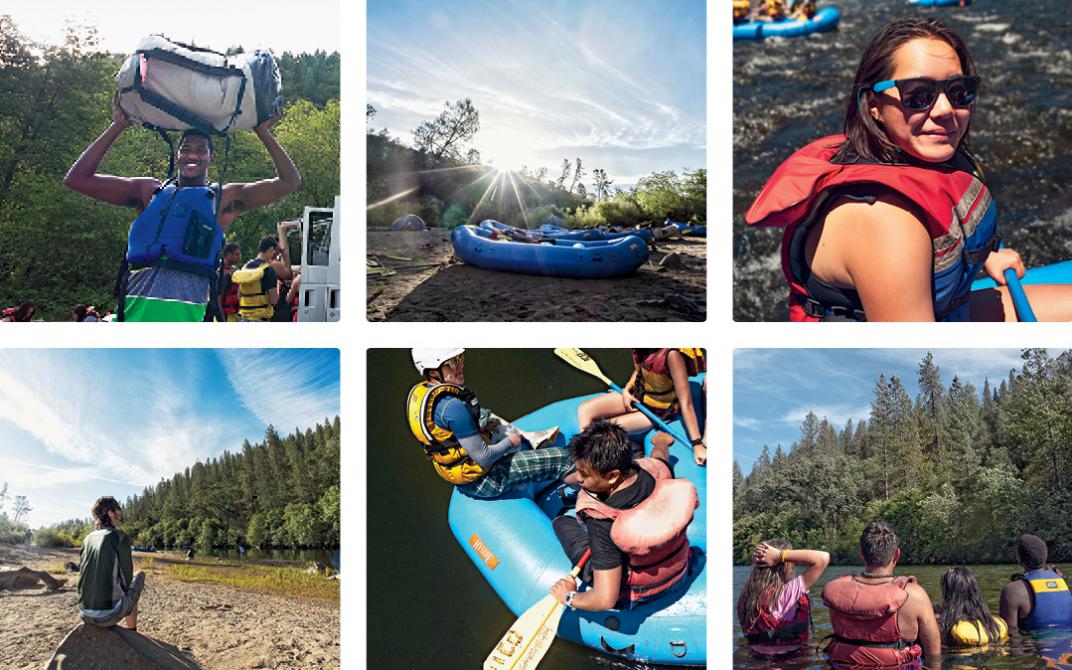Last week, on Thursday, February 5th I joined with eighty people, many I had never met before, to spend six hours inside, learning about the powerful impact time outside in nature has on the human body and why understanding its effects are important for us all. It was an amazing day!
REI, Sierra Club Outdoors, and the University of California, Berkeley’s Greater Good Science Center hosted a discussion about our joint partnership called the Great Outdoors Lab and its study of the physiological impact of time spent outdoors. We heard from scientists, health care professionals, government officials, representatives of the outdoor recreation industry, lands conservation advocates, and representatives of diverse constituencies, all of them world changers!
The research conducted by The Great Outdoors Lab is built on a broader understanding of the science of awe. Awe occurs in nature 80% of the time and creates profound changes in the mind and body, affecting our immune, neurological, digestive, and endocrine systems. On the other hand, reading this blog and staring at a screen all day does not do great things for our bodies.
David Mays of Kaiser Permanente kicked off the day with a keynote on what companies like Kaiser can do to promote wellness in our communities and shared the actions Kaiser is doing to prove its commitment to healthy communities. Dr. Dacher Keltner, who is leading the research at the Greater Good Science Center, presented the preliminary findings and discussed the power of awe—whether it is in nature, a great musician like Iggy Pop, or even a political rally. Three panels followed on the economic impact for cities, states, and businesses if we can get more people outdoors; the importance of getting outside for our health; and finally, how all of this research can serve as a powerful tool for increased access to public lands, particularly for communities with limited access to nature.
As the day progressed, it became increasingly clear that if we are to fully realize the benefits of simply being outside (increased cost savings to communities, increased health care savings, improved education and health care outcomes, and an overall happier and healthier world), there are five major steps we need to take. All of the different panels and speakers addressed these steps in some part during the day:
1. Expanding the amount of evidenced-based research available to decision-makers. The Great Outdoors Lab is seeking $2.8 million over three years starting in the summer of 2015 to expand the research to 75 youth each year through 2017 and piloting research with 75 military veterans, also for three years.
2. Breaking down the barriers of access to the outdoors for all people. It isn’t enough for existing outdoor users to simply invite people who look different than they do to come outside. It means working with communities to meet their needs and create a potentially new or different understanding of what it means to get outdoors and finding ways of increasing the physical proximity and transit options for all people to quickly and easily get to open space.
3. Creating a better understanding of the economic value of time outdoors. What costs are saved for individuals and health care? What revenue is brought into local economies because of usable, accessible open space? How many jobs are created, brought in, or supported by the myriad of categories of outdoor jobs and are those jobs being accurately counted?
4. Working together as a more united front of public health, medical, land conservation, and outdoor recreation communities to better understand how we can contribute to improved health outcomes and speak with a single voice to policymakers.
5. Expanding protections and access for large scale open spaces necessary to getting more people outdoors in a variety of ways all across the country and supporting clean energy to prevent extractive industries from marring landscapes; eliminating public land access; and poisoning our air, water, and land through spills, emissions, and coal ash.
Great Outdoors Lab findings have the potential to change the game not just in how policymakers think about preserving our public lands and expanding green space, but in welcoming home our veterans and rethinking health care practices. With so many great minds in the room thinking about this issue last week, I walked away feeling more driven than ever to find the funding for this work; to spend more time outside with the people in the room; and to ensure the data is used in the most effective way with policymakers, business leaders, and across the country with advocates for the many different issues we’re challenged with today.
Before we walked away, we vowed to meet again next year to continue the conversation with new data and to update everyone on the progress we made over the year, as well as to learn from the community about progress being made elsewhere. Thank you so much to those who joined us and for those who didn’t, I hope we can share with you all soon what we learned to get you as stoked as the kids out on the rafting study this last summer.
In the end though, the day highlighted what most of us know already—time outdoors can and does change lives for the better.
